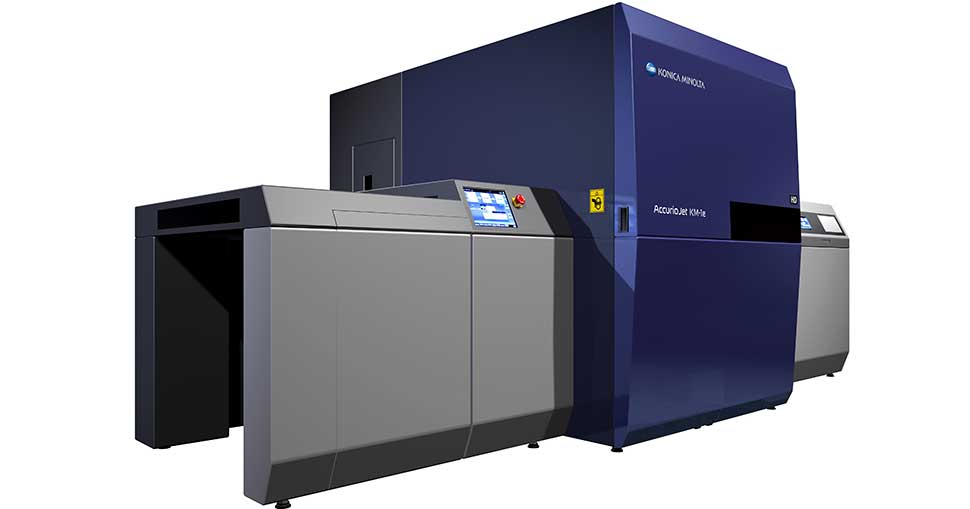As environmental awareness increases across the world, Konica Minolta has emerged as a leader in its efforts to promote sustainability. Within the printing industry, the company has embraced eco-friendly practices, reshaping printing technology to prioritise responsible production and consumption.
At the core of Konica Minolta’s environmental initiatives lies its ambitious ‘Eco Vision 2050’. Originally aiming for an 80 per cent reduction in carbon dioxide emissions, the company has since revised its goal to achieve net zero emissions for the entire product life cycle by 2050.
Promoting digital printing
Chris O’Hara, national production print manager at Konica Minolta New Zealand, says the net zero target reflects Konica Minolta’s recognition of the importance of addressing climate change and minimising its ecological footprint. He says, “A key strategy in Konica Minolta’s sustainability efforts is the promotion of digital printing over traditional analogue methods in commercial printing. Unlike analogue printing, which relies on various consumables such as printing plates, blankets, rollers, fountain solutions, and cleaning chemicals, digital printing eliminates the need for these components.
“Printing plates, typically made of metal like aluminium, and printing blankets, made of rubber, are integral parts of analogue printing processes. The production of these materials often involves resource-intensive processes, including mining metals or producing rubber through petrochemicals, contributing to environmental degradation and carbon dioxide emissions.
“Additionally, analogue printing requires significant water consumption for washing up these components after each use. By transitioning to digital printing, Konica Minolta reduces its environmental footprint by minimising the use of these materials and resources, thereby promoting a more sustainable and eco-friendly approach to printing.”
Successful recycling
Konica Minolta encourages a range of initiatives to make its products and processes more sustainable. Chris says, “The KM-1e Inkjet technology, which Ingede has certified for de-inking, ensures that ink can be efficiently removed from the paper, facilitating the recycling process and contributing to resource conservation.
Chris says, “The KM-1e emits no volatile organic compounds (VOC), setting it apart from other digital B2 platforms. This not only enhances environmental friendliness but also makes it compliant with stringent regulations. Additionally, the KM-1e’s adherence to emission standards makes it suitable for industries with strict regulations such as food safety (certified by FDA) and toy manufacturing, further demonstrating Konica Minolta’s commitment to sustainability and safety.
The AccurioJet KM-1e offers several environmental advantages over traditional offset printing methods. By streamlining the production process and minimising paper waste, this innovative technology helps reduce carbon dioxide emissions and conserve resources. Moreover, Konica Minolta’s proprietary HS UV ink ensures a clean working environment by emitting no Volatile Organic Compounds (VOCs), promoting employee health and well-being.”
In addition to its technological innovations, Konica Minolta actively collaborates with its customers and suppliers to promote sustainability throughout the printing supply chain. By sharing knowledge and best practices, the company empowers others to adopt eco-friendly solutions and reduce their environmental footprint.
Chris sums up the core insights:
- Konica Minolta’s ECO vision target has been revised to achieve 100 per cent emissions reduction by 2050.
- The AccurioJet KM-1e receives the highest rating from JFPI for its eco-friendly attributes.
- Konica Minolta’s HS UV ink minimises waste and emits no VOCs, contributing to a cleaner environment.
He adds that the environmental benefits of the AccurioJet KM-1e serve as an example of Konica Minolta’s ongoing efforts to create a more sustainable future for the industry. He says, “By advancing traditional digital technologies, it can reduce carbon dioxide emissions by up to 80 per cent compared to other UV ink press technologies. We can’t emphasise too much the importance of sustainable printing solutions in meeting customer demands and driving business growth.”
The need to prioritise environmental responsibility sits well with Konica Minolta’s stated sustainability goals. Chris says, “Konica Minolta remains at the forefront, pioneering innovative solutions for a greener future.
This commitment to sustainability sets a precedent for the printing industry, demonstrating that eco-friendly practices can lead to both environmental preservation and business success.”


